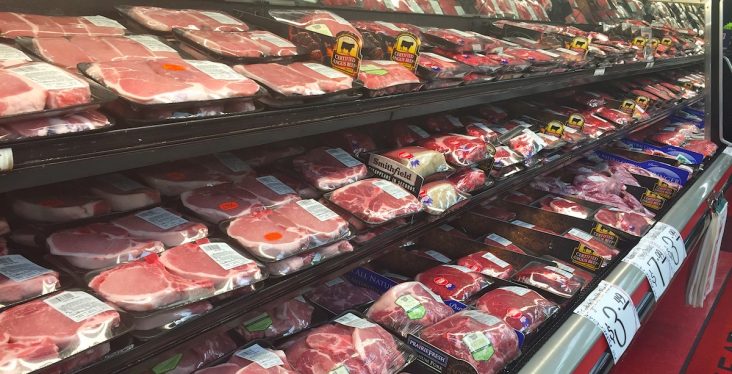Survey suggests consumers still buying meat despite higher costs
by March 13, 2023 5:07 pm 1,143 views

Despite inflation in the food sector, consumers are purchasing more fresh meat than before the COVID-19 pandemic because eating meals at home has become more important for American families, according to a report from the Meat Institute and the Food Industry Association.
The report also found consumers are seeking value, shopping promotions and still displaying cost-conscious shopping behaviors amid persistent inflation.
To save money, 76% of the survey respondents said they made changes to the amount, type, cut, and/or brand of meat they purchase or changed where they shop. Consumers’ top strategies to save money include buying only the amount needed (42%), looking for coupons (35%), and stocking up when meat is on sale (35%).
Just under 20% said they were buying less meat with organic, grass-fed or other special claims in order to save money. Only 16% of meat shoppers said they cook more meatless meals to save money. Of the 33% who said they are looking to eat less meat or chicken, 52% cite cost as the reason which is up from 16% in 2020, the report states.
“The research tells us that we’re seeing a more price-conscious shopper, but we’re also witnessing shoppers seeking ‘simple pleasures’ and that’s one area among others where the meat department can delight,” said Rick Stein, vice president of fresh foods for FMI—The Food Industry Association. “For example, shoppers concerned about food prices might opt to splurge on an at-home date-night meal. Food retailers can best serve today’s shoppers by emphasizing value-added meat options and catering to shoppers with meal solutions.”
The survey found 78% of respondents were meat eaters. This cohort said they spend more than $15 in the meat department per shopping trip which averages one trip per week, up 5% since 2019. About half of the shoppers said they get their meat from a supermarket, 35% said they shop in supercenters, and 9% at club stores, with discounters like Aldi getting 5%.
Shoppers said product quality and appearance continue to be the top factors driving meat purchasing followed closely by price per pound and total package price, the report states.
The report also noted several trends with meat preparation. Americans prepare between four and five dinners (4.6) at home during a typical week, and 87% said meals contain a portion of meat or poultry. While more households are cooking their own meals than before the pandemic, 55% of those surveyed said they use some semi- or fully-prepared foods in dinner preparation, and 45% who said they cook from scratch. AMI also reports 73% of consumers sometimes or frequently bought pre-marinated, pre-cut or pre-seasoned meat in 2022, up from 60% in 2020.
USDA reports retail “choice” beef prices remained high at roughly $7.60 per pound as of March 7, retail pork prices are also high at $4.75 per pound, each more expensive than a year ago.
Conversely, retail chicken prices are coming down from extreme highs last year. The boneless, skinless chicken breast meat prices averaged $1.35 per pound in early March, down from $2.70 a pound a year ago. Wing prices are also down to $1.15 per pound in early March, compared to $1.90 per pound a year ago. Chicken leg prices are trending higher to 36 cents per pound, up from 31 cents per pound a year ago.
Retail turkey breast meat prices are also lower from a year ago at $4 per pound, down from $4.50 per pound year over year.
